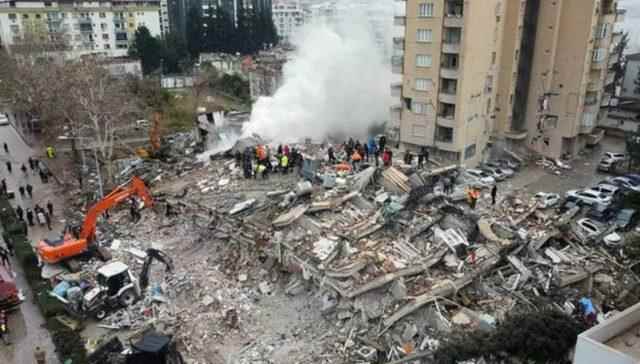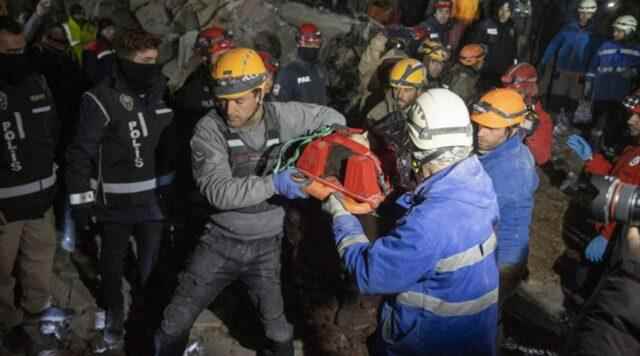It is stated that people in the earthquake area have problems in terms of both nutrition and hygiene. In order to protect the health of earthquake victims, the interventions should be conscious. Infectious Diseases and Microbiology Specialist, who warned about what to do against the risk of infection after the earthquake. prof. Dr. Hakan Leblebicioğlu said, “Dissemination of vaccines, not violating hygiene rules, providing adequate medical and health services, providing clean water, taking care not to spoil food, not consuming open or spoiled food, creating clean environments, avoiding crowded environments in the camps where earthquake victims are staying, and adequate ventilation of indoor environments. “It’s important to prevent the spread of infections,” he said.
THESE CONDITIONS INCREASES THE RISK OF INFECTION
prof. Dr. Hakan Leblebicioğlu gave information about what to do against the risk of infection after the earthquake. prof. Dr. Hakan Leblebicioğlu, “After the earthquake, unhygienic environments as a result of factors such as the collapse of the buildings where people live, people being under the rubble, lack of personal hygiene materials, the necessity of sheltering in crowded environments, insufficient food and water resources, damage to water resources (mixing with sewerage) cause infections to develop. it could be. In addition, factors such as the outbreak of infectious diseases endemic in the disaster area pave the way for the development of infections. Climate conditions are also an important factor in the spread of infections.
MOST COMMON INFECTIONS
Stating that the combination of the earthquake and related primary and secondary effects, the physical characteristics of the affected area and the socioeconomic characteristics of the affected communities, Prof. Dr. Hakan Leblebicioğlu said, “Infectious diseases recorded in areas where earthquakes occur can be classified as respiratory tract infections, food and water-related diseases, vector-borne diseases, and wound and skin infections. Among the infections, the most common are bacterial infections such as tetanus, salmonellosis, shigellosis and typhoid fever, viral infections such as rabies or hepatitis, and respiratory infections such as tuberculosis. These diseases can occur as a result of contamination of clean water and food sources, living in unhygienic environments and contact with sick people. Factors such as after a natural disaster, crowded shelter camps, lack of ventilation, malnutrition can cause the spread of transmitted infections. These infections can include diseases such as influenza, Covid-19, measles, meningitis, tuberculosis and scabies. Water and food-borne infections may result from deterioration of hygienic conditions.
CORRECT RESPONSE TO DIRTY WOUNDS IS CONDITIONAL
Pointing out that diarrhea outbreaks can occur in sheltering camps after natural disasters or in environments where hygienic conditions are not fully met and access to water is difficult, Prof. Dr. Hakan Leblebicioğlu said, “The causative microorganisms in these epidemics include salmonella enterica, vibrio cholerae, and norovirus. Leptospirosis is another disease seen among post-disaster infections. Leptospirosis occurs after contact with water, food, or soil contaminated with the urine of infected animals. There may be a risk of rabies after animal bites. After the earthquake, most of the injured who were removed from the rubble need urgent surgical intervention and intensive care support. These casualties may have dirty wounds, which may increase the risk of infection in patients. Antibiotic prophylaxis applied due to dirty wounds may lead to the emergence of resistant microorganisms. Dissemination of vaccines, not violating the hygiene rules, providing adequate medical and health services, providing clean water, taking care not to spoil the food, not consuming open or spoiled food, creating clean environments, avoiding crowded environments in the camps where earthquake victims are sheltering, and adequate ventilation of indoor environments are necessary to prevent the spread of infections. is important,” he said.

LACK OF HYGIENE INCREASES THE RISK OF INFECTION
Emphasizing that it is important to prevent diseases such as tetanus, measles and rubella, it is important for people to be fully vaccinated and, if necessary, additional doses. Dr. Hakan Leblebicioğlu said, “Ensuring the injured have access to emergency response and treatment services prevents infections from occurring and increasing treatment requirements. Informing the victims about healthy living and hygiene after the earthquake can reduce the emergence and transmission of infections. Most of our wounded who are removed from the dent require urgent surgical intervention and intensive care support. In addition, patients with contaminated wounds may be at increased risk of infection. Therefore, it is very important to pay attention to hygiene and cleanliness.
HYGIENE PRODUCTS SHOULD BE PRIORITY IN AID MATERIALS
Those who bring aid to the earthquake should give priority to hygiene activities. Those who come into contact with open wounds, secretions and mucous membranes of patients should use gloves. Before wearing and removing gloves, hands should be disinfected with alcohol-based hand disinfectants or washed with soap. Gloves must be changed if a patient is to be transferred to another patient. In short, following the hygiene measures after the earthquake will reduce the risk of infection and accelerate the recovery of the patients. For this reason, all teams that bring aid to the earthquake should help the patients recover by not forgetting to follow the hygiene rules. In summary, in the post-disaster period, it is very important to take precautions such as people’s attention to hygiene and health issues, providing suitable environments for accommodation, and availability of hygienic food and water resources.
(UAV)
